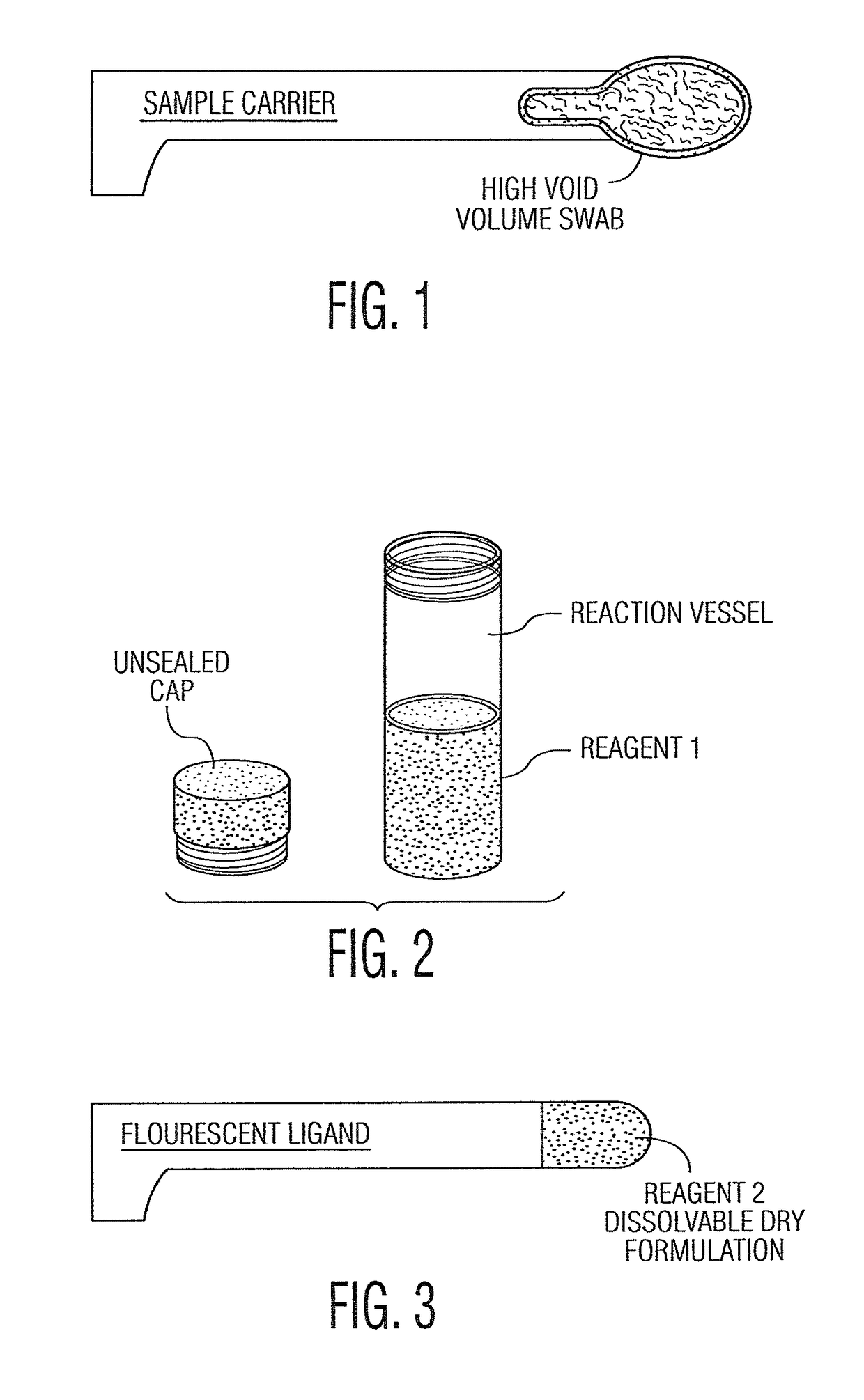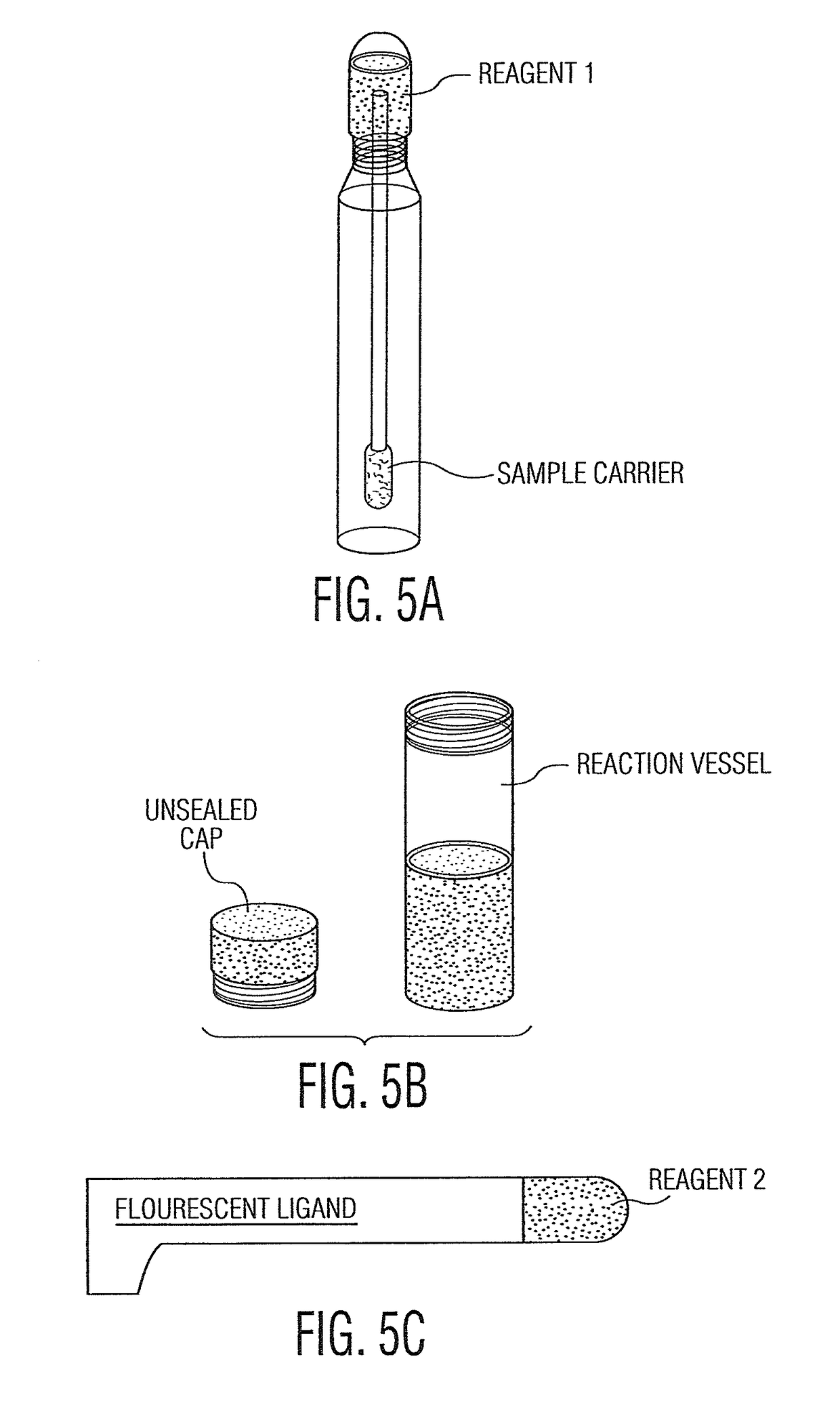System and method for diagnosis and treatment
a diagnostic system and system technology, applied in the field of low-cost rapid response diagnostic system, can solve the problems of high cost, laborious test, prohibitive cost and time factor for cortisol levels in clinical testing of patients,
- Summary
- Abstract
- Description
- Claims
- Application Information
AI Technical Summary
Benefits of technology
Problems solved by technology
Method used
Image
Examples
example 1
[0257]This study is performed to obtain evidence for enhancement of chemotherapy sensitivity of GR+ / ER− / PR− / Her2−neu− breast cancer cells by blocking stress-mediated cell survival pathways with a GR antagonist. In the present pilot study, the GR antagonist ORG 34517, is investigated, in one dose, in combination with the chemotherapeutic agent Taxol. Both the Taxol and ORG 34517 doses are selected based on previous experiments.
[0258]Materials and Methods—1×107 TNBC (Triple Negative Breast Cancer; MDA-MB-231) cells in 50 ul of PBS (phosphate buffered saline) are injected into the mammary fat pad of 4-5 week old CB-17 SCID mice (Taconic Labs). The mice are allowed to form xenografted breast tumors of approximately 200 mm3 volume. When tumors reach an average of 200 mm3 (Week “0”), 15 mice are separated into the 3 treatment groups 1) vehicle, 2) paclitaxel (Taxol), 3) ORG 34517+paclitaxel. The used paclitaxel dose is 10 mg / kg / day dissolved in Ethanol / Sesame Oil; ORG 34517 is administere...
example 2
[0263]Mice were implanted with cultured ER-GR+ human breast cancer cells. As tumor volume in each mouse approached the test threshold of 200 mm3, the mice were randomized to receive intraperitoneal injections of vehicle alone, chemotherapy (Paclitaxel) alone, and chemotherapy and ORG 34517. Each group contained 3 mice. Results show significant differences in attained tumor volume (see FIG. 10).
example 3
[0264]In conventional dosage forms, like a capsule or a tablet (11β,17β)-11-(1,3-benzodioxol-5-yl)-17-hydroxy-17-(1-propynyl)estra-4,9-dien-3-one suffers from a low exposure, high dose variability, large food effect and non-dose linearity. Another dosage form than a conventional tablet or capsule may be able to circumvent these issues.
[0265]The solubility of (11β,17β)-11-(1,3-benzodioxol-5-yl)-17-hydroxy-17-(1-propynyl)estra-4,9-dien-3-one is determined in different solvents. These solutions can be of use for clinical treatment with the advantages as mentioned above.
[0266]
TABLE 1CompoundSolubilityAcetone>10 mg / mLAcetonitrile>10 mg / mLArachis oil2.46 mg / gBenzylalcohol390 mg / gCastor oil7.38 mg / gCastor oil:benzylbenzoate (90:10)15.0 mg / gCastor oil:propylene glycol laurate (0.55:0.45; v:v)9.4 mg / gCorn oil2.58 mg / gCremophor EL23 mg / gDimethylsulfoxide>100 mg / mLDog bile:phosphate buffer (pH = 6.5) (1:1)~0.08mg / mLEthanol>10 mg / mLEthanol:PEG 400:Propylene glycol (10:50:40)28.6 mg / mLEthanol:PE...
PUM
| Property | Measurement | Unit |
|---|---|---|
| time | aaaaa | aaaaa |
| time | aaaaa | aaaaa |
| time | aaaaa | aaaaa |
Abstract
Description
Claims
Application Information
 Login to View More
Login to View More - R&D
- Intellectual Property
- Life Sciences
- Materials
- Tech Scout
- Unparalleled Data Quality
- Higher Quality Content
- 60% Fewer Hallucinations
Browse by: Latest US Patents, China's latest patents, Technical Efficacy Thesaurus, Application Domain, Technology Topic, Popular Technical Reports.
© 2025 PatSnap. All rights reserved.Legal|Privacy policy|Modern Slavery Act Transparency Statement|Sitemap|About US| Contact US: help@patsnap.com



